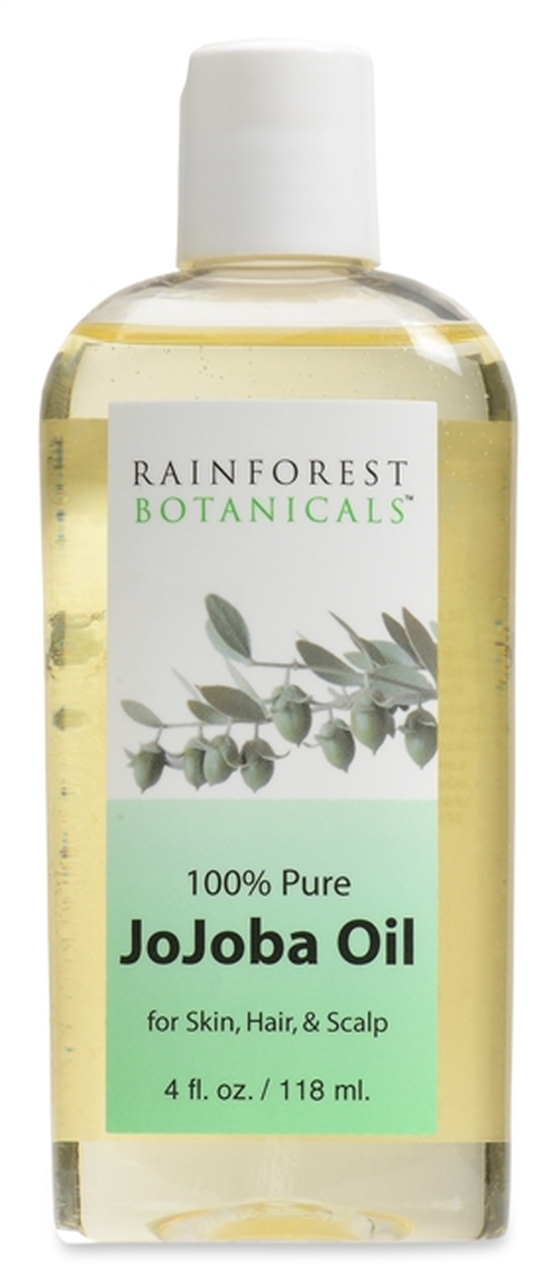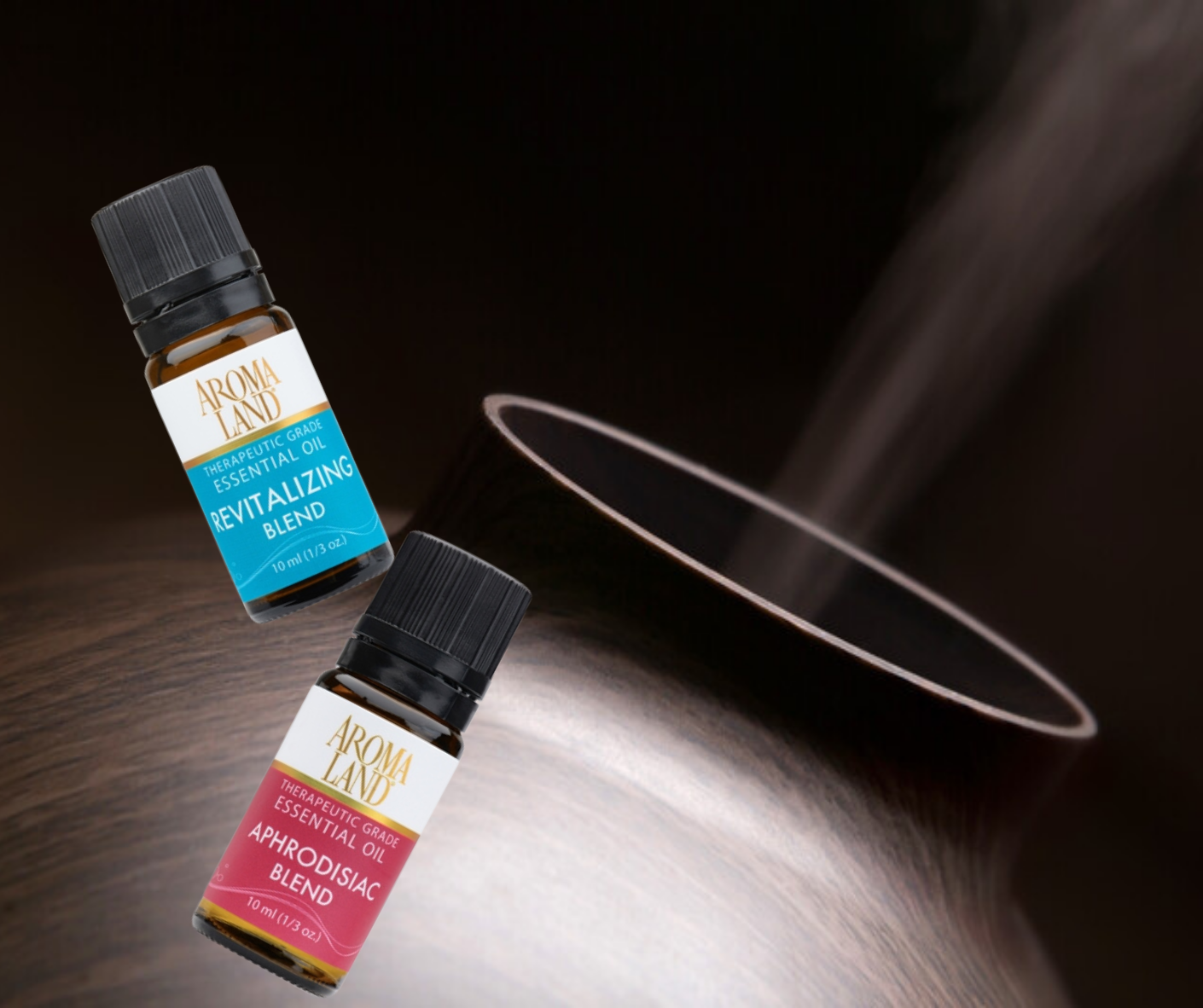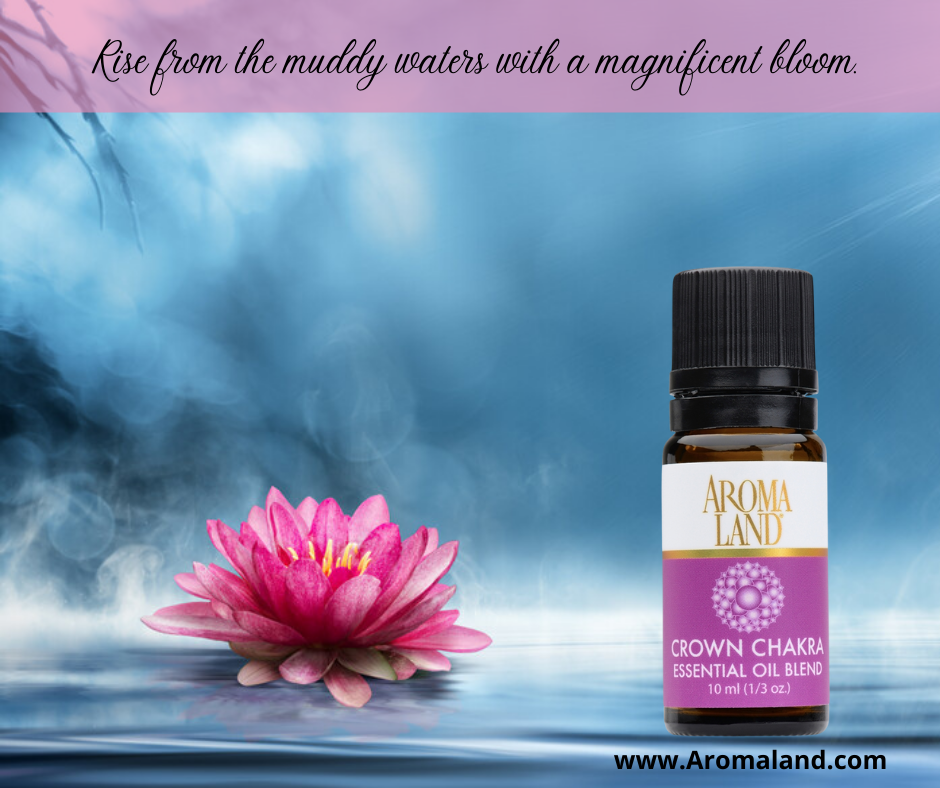Top 7 Questions Answered for People New to Essential Oils
Sep 13th 2021
The blissful scent of an essential oil can send your mind traveling to a far-off place. You can imagine being in a French garden, pine forest, or tropical paradise. Forget your worries, live in the moment, and delight in aromas like lavender, pine needle, or ylang ylang.
It is no wonder you have fallen in love with the magic of essential oils! An amazing journey awaits when you open the tiny bottle’s lid.
But before you get swept away with a carefree approach to aromatherapy, there is some basic information you should know about enjoying essential oils safely and effectively. This article will talk about seven of the most common questions asked by people new to using essential oils.

What is an essential oil and why is it so potent?
First off, what is an essential oil? About 5% of all plants in the world produce this aromatic volatile component. Reasons include: to deter pests, to attract pollinating insects, or even to help ward off microbial infections (1).
Essential oils are typically extracted via steam distillation from aromatic plant parts such as the roots, leaves, bark, heartwood, seeds, or flowers. During steam distillation, the plant’s most light weight and volatile molecules are separated from the solid plant material. The liquid essential oil typically represents less than 2% of the plant’s total matter.
Further, the molecularly light components that make up an essential oil are the most potent components of the plant material. The word volatile is often used to describe an essential oil and refers both to the way it evaporates quickly and to the way it is very chemically reactive.
This is the reason why essential oils have such a small therapeutic margin. It is important to dilute essential oils when you apply them topically and to also enjoy using them sparingly in a diffuser. A small amount goes a long way. Essential oils are best used in moderation.
Fun Fact: Essential oils contain no protein, fiber, vitamins, or minerals. This is because the molecular weight of these components is too heavy to be extracted during the steam distillation process.


What is the safe way to use essential oils topically?
Before answering this question, it is important to note that each essential oil has differing dilution guidelines based upon its chemical composition. Some essential oils, which are commonly called “hot oils,” should be avoided for topical use unless very heavily diluted (2).
There are also a few essential oils which are considered phototoxic. This means they could cause severe skin damage if you apply them topically and then go out in the sun (2).
For healthy adults, the safe way to use essential oils topically is to first dilute them to 2%. Certain essential oils have contraindications with topical use, especially as it relates to young children, pregnancy, and sensitive skin. For more information, please see the contraindications section of this article.
List of Common Hot Oils
- Bay (Pimento racemosa)
- Cinnamon (Cinnamonum zeylanicuim)
- Clove (Syzygium aromaticum)
- Lemongrass (Cymbopogon citratus)
- Oregano (Origanum vulgare)
- Thyme (Thymus vulgaris)
List of Common Phototoxic Essential Oils
- Bergamot that is not FCF (Citrus bergamia)
- Expressed or distilled grapefruit (Citrus paradise)
- Expressed lemon (Citrus limon)
- Expressed lime (Citrus medica)
- Expressed bitter orange (Citrus aurantium)
Note: FCF bergamot has had the phototoxic furanocoumarins removed and is not phototoxic. Also, distilled and expressed are differing extraction methods of citrus aromas, and most distilled citrus (except for grapefruit) are not phototoxic.
As a general rule, experts suggest that healthy adults dilute essential oils in a carrier oil to 2% for body lotions, oils, and sprays. With hot oils and people with sensitive skin, dilute at a higher rate. Also dilute more heavily with children and the elderly.
Using essential oils neat (undiluted) can lead to unpleasant skin irritations or sensitizations. Dilute essential oils in carrier oils such as jojoba, sweet almond, coconut, or sunflower oil. Plus, these carrier oils will offer additional benefits for your skin and reduce the rate of evaporation of the essential oils! Below is an easy chart for you to use when diluting an essential oil to 2% in a carrier oil.
2% Dilution Chart
- 1 drop of essential oil per 3 milliliters of carrier oil
- 2 drops of essential oil per teaspoon of carrier oil
- 5 -6 drops of essential oil per tablespoon of carrier oil
- 10-12 drops of essential oil per ounce of carrier oil
- 80 – 120 drops of essential oil per cup of carrier oil
Fun Fact: A drop is a less accurate measurement of a liquid and varies based on density. Thus, weight-based measuring is more accurate and preferred when making precise recipes.

What are some basic guidelines for using essential oil diffusers?
Diffusing is a common way to enjoy aromatherapy. These devices are easy to use and disperse delightful molecules of essential oil into the air. Whether it is a blend or single note, aromas can help improve your mood and freshen the air.
Here are some basic guidelines to consider before you start using essential oil diffusers.
General Aromatherapy Diffuser Guidelines
- Diffuse in well ventilated rooms.
- Diffuse intermittently for 20 to 30-minute intervals. Excessive or prolonged diffusing of aromas can cause nausea or other unpleasant side-effects. Diffuse much less around animals, children, and those with certain medical conditions, such as pregnancy.
- Avoid diffusing near infants, caged pets, and bed-ridden people.
- Certain essential oils are contraindicated with certain medical conditions. Ask your Doctor if you have any questions.
- Discontinue using if an irritation occurs.
- Keep essential oils and diffusers out of reach from children and pets.
- Essential oils are flammable. Do not sprinkle essential oils onto a candle flame.
There are a variety of diffusers. The most common type is a cool mist diffuser, but there are also nebulizing diffusers, fan diffusers, and heat-based aroma diffusers. Follow the manufacturer’s guidelines for your specific model.
Fun Fact: Some aromas can have a calming effect while other aromas can be stimulating. While every individual is different in their perception of a scent, lavender is considered calming and rosemary is considered stimulating.

Is it safe to drop essential oils into bath water?
Essential oils are oil soluble. They are not water soluble. In other words, essential oils and water do not properly mix. Thus, it is not advised to drop essential oils into bath water without first diluting them in a carrier oil.
Just as oil and vinegar do not stay combined in a bottle of salad dressing, a similar situation would occur if you combined essential oils with water in a container. While you can temporarily disperse the oil around in the water with physical shaking, the ingredients will separate after a short time.
Dropping essential oils into bath water would cause undiluted exposure directly onto your skin and other more sensitive areas. The added effect of heat via hot bath water could further exacerbate the situation.
To use essential oils in a bath, you should first dilute them to 1% or 2% in a carrier oil. Then, adults can pour about an ounce of the blend into bath water. To make bath salts, first dilute essential oils properly in a carrier oil. Then, pour about an ounce of the blend onto a cup of salt. Stir well.
Fun Fact: In addition to water, essential oils do not mix properly in witch hazel, vinegar, most alcohols, baking soda, or salts.

Is it safe to drop essential oils in a glass of water for drinking?
The short answer to this question is NO!
Here are a few reasons why it is unsafe to drop essential oils into a glass of water for drinking. First, essential oils are very potent and chemically reactive. Secondly, essential oils are not soluble in water. Improperly diluted, the ingestion of essential oils can be quite dangerous.
There could be contraindications with medications or health conditions. Plus, the oils could damage the delicate mucous membrane tissue of your digestive tract. Even a small amount of certain essential oils could cause serious organ toxicity!
List of Dangers Associated with Dropping Essential Oil in Water for Drinking
- You could burn the epithelial tissue in your mouth, throat, and digestive tract.
- Excessive dosage or duration could cause poisoning or organ toxicity.
- There could be contraindications with certain health conditions or medications that could be dangerous.
- You could have an allergic reaction.
Professional aromatherapy organizations advise that at home users do not take essential oils internally without the advice of a trained healthcare practitioner (3,4). Further, unless you are an expert, buy already blended commercial products with properly labeled usage instructions. Always ask your Doctor about possible contraindications if you are taking medications or have health issues.
There are safer alternatives to dropping essential oils in water. If you want a peppermint flavor, try crushing a few peppermint leaves in your water. If you are after a lemon taste, squeeze some lemon juice in your water. Or, if you are interested in the benefits of oregano, sprinkle a pinch of the herb into your cooking recipe.
Note: Just as there are possible contraindications with essential oils, there may also be contraindications associated with the intake of certain herbs, especially beyond normal food amounts.
Fun Fact: Essential oils high in phenolic constituents can be the most toxic if taken internally in excess. These can include bay, cinnamon, clove, oregano, and thyme.

What are the possible contraindications of using essential oils?
Essential oils are very potent and should be used thoughtfully. Before trying an essential oil, read the bottle’s label to learn some basic information. Investigate possible contraindications of using essential oils ahead of time, and ask your Doctor if you have any questions.
Here are some basic guidelines.
- Avoid using essential oils around very young children.
- Use essential oils more sparingly around children, the elderly, pets, and those with certain medical conditions.
- Investigate possible contraindications before use.
- Essential oils to consider avoiding during pregnancy, nursing, and around young children or pets include aniseed, anise, basil (estragole CT), bay, birch, cajeput, camphor, cardamom, cinnamon bark, clary sage, clove, dill, eucalyptus, fennel, garlic, grapefruit, hyssop, jasmine, lemongrass, marjoram, myrrh, niaouli (cineole CT), oregano, pennyroyal, peppermint, rosemary, sage, tea tree, thyme, wintergreen, and ylang ylang.
- Always dilute with topical use. It is suggested for healthy adults to dilute to 2% in a carrier oil for general lotions and body oil recipes.
- Avoid the topical use of hot oils (unless very heavily diluted). These include lemongrass, clove, cinnamon, bay, oregano, and thyme.
- Especially with sensitive skin, perform a skin patch test on a small area before applying an essential oil product topically.
- Avoid phototoxic essential oils with sun exposure. These include bergamot that is not FCF, expressed or distilled grapefruit, expressed lemon, expressed lime, and expressed bitter orange.
- When diffusing essential oils, enjoy them intermittently for 20 to 30-minute intervals. Diffuse less around children, pets, and those with certain medical conditions.
- Avoid the ingesting of essential oils unless prescribed by a Doctor. Also, choose commercially made products already properly diluted.
- Always discontinue using an essential oil product if any types of irritations occur. Contact your Doctor or Vet if you are concerned.
Fun Fact: Skin patch testing involves trying a topical product out on a small and inconspicuous area of the skin before use. To skin patch test, place a small drop of the product in the crook of your elbow and cover the area with a cotton ball and band-aid for the day. Do not use if any irritation occurs.

What is the shelf life of an essential oil?
Sadly, essential oils do not last forever. Shelf life of an essential oil varies based on the molecular weight of the oil, with the lightest notes, like citrus, being the most fragile. Try to use most essential oils within a year or two. Below are some things you can do to help prolong shelf life.
When storing essential oils…
- Avoid exposure to light, heat, and air.
- Avoid contamination.
- Keep out of reach of children and pets.
Avoiding exposure to light, heat, and air can help reduce chemical reactions. First, sunlight and heat can speed up photocatalytic activities that chemically change an essential oil. The rate in which an essential oil deteriorates doubles with every 10 degrees Celsius of temperature increase. This is because heat speeds up the kinetic energy of atoms, causing them to collide into each other at a faster rate, thus speeding up chemical reactions (6). Choose dark colored glass bottles, and store in a cool, dark place.
Air exposure can cause oxidation. Oxygen molecules combine with the essential oil constituents to change the chemistry of the aromatic oil. Oxidized oils can be more skin sensitizing and have less therapeutic benefits (1). Make sure you store your essential oils with lids that seal tight. Also, the more air space that is in a bottle, the greater the risk of oxidation. Choose smaller bottles with a minimal amount of air space.
Avoiding contamination is also important. Essential oils should not be stored in plastic or certain metal containers. Some materials can degrade, and particles can integrate with the essential oil (6). Also, do not get other natural ingredients like carrier oils and other essential oils into the bottle. Avoid “double dipping” by using clean pipets.
General Shelf Life Guidelines Based on Essential Oil Weight
- Use light weight essential oils up within a year. Examples include grapefruit, lemon, lime, balsam fir, and pine.
- Use medium weight essential oils up within three years. Examples include lavender, tea tree, lemongrass, petitgrain, citronella, and neroli.
- Use heavy essential oils up within 5 years, or maybe longer. Examples include clary sage, patchouli, vetiver, ginger, and cedarwood.
What can you do when your essential oils have reached their expiration date? Use them in your laundry or house cleaning recipes. To use in the laundry, add about ½ tsp of essential oil per cup of laundry detergent.
Fun Fact: Adding rosmarinic acid or vitamin E to an essential oil recipe can help increase shelf life.

In conclusion…
Aromatherapy can certainly bring joy to life. For people new to using essential oils, there are a few basics you should know. If this article has not answered a certain question you may still have, I would be happy to answer it for you!
Let’s talk. Please leave your comments and questions below.
References
1.Tisserand, R. & Young, R. (2014). Essential Oil Safety, Second Edition. Churchill Livingstone Elsevier.
2.National Association for Holistic Aromatherapy. (2021). Dermal Safety. Retrieved on 5/28/2020. Retrieved from: https://naha.org/explore-aromatherapy/safety#dermal
3.Alliance of International Aromatherapists. (n.d.). Safety Statement. Retrieved on 5/28/2020. Retrieved from: https://www.alliance-aromatherapists.org/safety-s...
4.National Association for Holistic Aromatherapy (2021). Safety Information. Retrieved on 5/28/2020. Retrieved from: https://naha.org/explore-aromatherapy/safety
5.Bowles, J. (2003). The Chemistry of Aromatherapeutic Oils. 3rd Edition. Allen & Unwin.
6.Clarke, S. (2002). Essential Chemistry for Aromatherapy. Second edition. Churchill Livingstone Elsevier.


